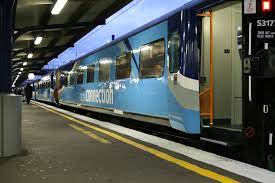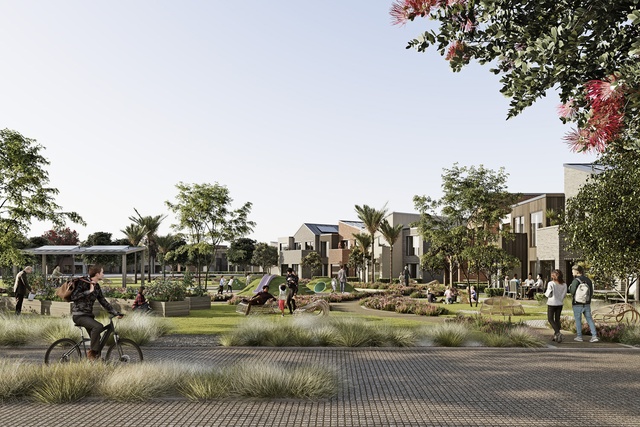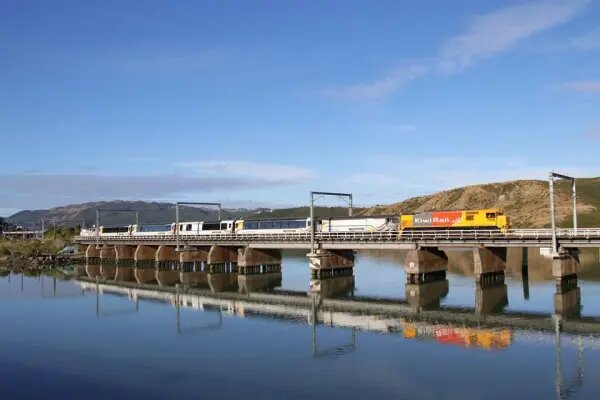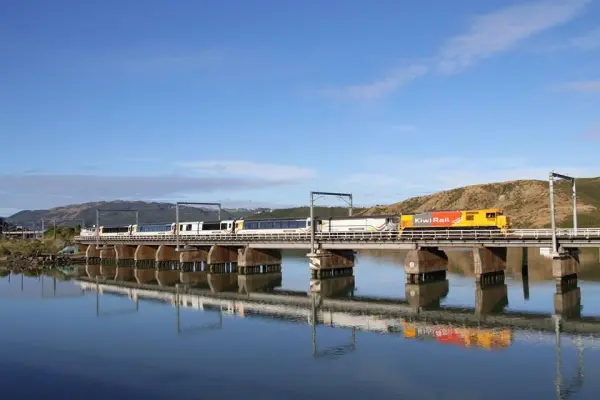Opinion - Richard Peat, the founder of Aotearoa Rural Rail / Rerewhenua ā-rohe o Aotearoa, examines reasons for reform of Aotearoa New Zealand national rail network.
KiwiRail has no imperative ambition in developing frequent rural inter-regional passenger train services. KiwiRail last 10 year plan had little to say on the subject. That being the case should not the rail network be accessible to those that wish to reintroduce rural passenger trains?
Is it not in the most expedient economic and environmental interests of Aotearoa New Zealand that the abandoned “Rail Poor” communities who have a rail line on their doorstep are reconnected, and by that attestation, have access to greater mobility to engage with the rest of the nation on all levels normal human interaction, be it social, commerce or employment.
Which ministers, politicians and academics advocated that long distance train travel in Aotearoa New Zealand is only for leisure travel, and in that primarily for foreign tourists by pricing off the train the average Kiwi family from using the “Grand Journey” KiwiRail trains with ticket prices that they cannot afford. And is it not immoral that the Kiwi tax payer finances the refurbishment of such overseas tourist focused train services.
The nation has to start rebuilding the inter-regional rural rail network now to deliver additional capacity on existing lines by creating the ability to run more trains safely, more frequently, and ultimately quicker with the introduction reconfigured rail pathways and modern user friendly comfortable station environments (aka domestic air terminals) across the whole Aotearoa New Zealand and not just in metropolitan areas.
There is a market, a much publicised vocal demand, from regional councils and rural communities across both North Island/Te Ika-a-Māui and South Island/Te Waipounamu for then reintroduction of rural inter-regional passenger rail services.
However that exigency cannot be fulfilled if KiwiRail are allowed to dictate the specification of the passenger train and the when-where frequency of operation. And not if Auckland Transport or MetLink are allowed to monopolise the rail tracks within their metropolitan areas to obstruct the “through running” of inter-regional rural passenger traffic.
With the restrictions currently imposed by these bodies any new passenger train public or private (or a PP partnership) will be still born and unable to provide a service that the domestic passenger market seeks.
The prime objection often raised by the “anti-rail” lobbyists and government ministers and many politicians is that the population of Aotearoa New Zealand is too small and too dispersed over a large land mass for passenger rail services to be viable. A little research identifies that that excuse, for all it is, does not stand up.
Below is just a small example of similar geographic/topographic and GDP domains to Aotearoa New Zealand in 2021:
Nation Population GDP1 Per Capita1 Landmass2
New Zealand 5.100m 250b$US 40,700$US 265,000k2
Greece 10.6m 216b$US 18,800$US 38,700k2
Sardinia 1.6m 25b$US 20.900$US 24,100k2
Croatia 4.4m 67b$US 14,800$US 53,100k2
Note1 figures are rounded. Note2 the figures exclude all offshore islands.
The three nations are identified as those that in the last decade have chosen to invest heavily in the regeneration of their passenger railway infrastructure and ownership formats. Also they are all substantially mountainous and earthquake prone regions. I quote from their respective Minster’s responsible for its railways:
- Croatian Minister Oleg Butkovic: “This is going to be the decade of the railways”
- The Greek TrainOSE CEO Philippos Tsalides: “At the end of the 2020’s passenger train transport will be liberalised.
The very recent October, New Zealand's Government statement confirming the “no change” KiwiRail SOE format is a notification to the electorate that the cosy dysfunctional hegemony between the BeeHive and the board of KiwiRail transparently signals that that relationship between state and its railway endorses yet more of the same dereliction of duty. More abandoned rural railway lines, more poor financial oversight of KiwiRail’s spending, more extravagant project budget accounting, and ultimately, no inter-regional rural passenger trains in this or possibly the next decade.
The question always asked is: What is the true potential volume of the market for regular timetabled modern swift inter-regional passenger trains - frankly no one knows, and won't know, until consumer feedback is gleaned from the introduction of such services because it has been at least 50+ years since Aotearoa New Zealand had regular rural passenger trains in service on both main islands. And in those intervening years demographics and societal behaviours have dramatically changed, as have the technologies applied to passenger trains. However there is empirical and statistical evidence that Aotearoa New Zealand’s “Rail-Poor” will support new modern passenger train services in sustainable volumes and also that metropolitan Kiwi’s, domestic tourists and overseas visitors will do likewise.
One case study to illustrate this is Scotland’s “Border Railway” which had been closed and the track removed for over 4 decades before its total rebuild and the relaunch of passenger services. The Scottish anti-rail lobby and parliamentarians said it would never be a success and that the huge costs of reopening could never be justified. The projects supporters best guess of passenger numbers in the first year (2015) was 600 thousand. It actually exceed that in its first 6 months of operations and went on to carry over 1.2m fare paying passengers at the first year end, and still does today
A fresh start has to be made in Aotearoa New Zealand, and it begins with the reconnection to that substantial population - the rural “Rail-Poor”- who despite there being a rail track passing through their communities have no passenger trains.
Rail is attracting the rapidly increasing global band of eco-travellers willing to dump the plane, car and camper van whenever practical. These and the expanding “No-Fly or Fly-Less” environmentally aware community plus overseas visitors to Aotearoa are frequent train travellers in their homelands. They all currently find Aotearoa New Zealand’s passenger train mobility options totally irrational for a modern state, annoyingly restricted in scope, and, very counter productive to the eco-tourism image that New Zealand takes pleasure in and derives satisfaction from its global tourism marketing campaigns.
There are domestic inter-regional short haul urban commuters who would use affordable, frequent, comfortable, quiet and modern zero carbon emission trains. There are those wishing to visit distant relations and folk relocating to new jobs or investigating an out-of-town job opportunity. And there’s the student groups and academics travelling between home and campus. Professional groups heading to a conference, sports teams or school groups. Kiwi pensioners of whom most are not particularly wealthy are a target market who desire a more relaxing and informative travel experience. Lastly, do not dismiss domestic and overseas visitors who want to see the incredible landscape that Aotearoa New Zealand offers - up close and not from above the clouds.
All these revenue opportunities are out there nationwide waiting to be optimised but it will only happen with the right rail product. The KiwiRail mindset is simply not entrepreneurially configured to imagine or execute a passenger rail business strategy into the hinterlands.
Really ministers, members of parliament and anti-rail lobbyists - is there truly a justifiable case for not supporting the reintroduction of rural rail passenger travel right now to permit or better still positively facilitate new rail travel options for hundreds of thousands of rural New Zealander’s who in 2022 know little of the benefits to themselves and their communities of modern rail travel.
Government ministers cannot continue to support KiwiRail’s anarchic budgetary allocation of freight winners at the total expense of rural communities as losers. The consequence of more rural tracks being removed, decommissioned or mothballed by the SOE’s budget machinations are yet more decades of rural depopulation, social deprivation, and poverty that leads inevitably to increased unemployment and criminality.
The value to the country’s economy generated by all public passenger transportation is captured by eclectic businesses and their essential diversity served by that transportation. The greater the diversity of mode of transportation the broader that wealth generation is shared within communities and beyond regional boundaries.
The dream of Aotearoa New Zealand rail supporters is very high speed passenger trains. This will not be achieved across Aotearoa New Zealand’s rural landscape in part due to its narrow gauge track current pathway formations and the huge cost of electrification. Best except that stark fact and deliver what is achievable and at a much lower cost and benefit to the nation.
The present condition of the network leaves a lot to be accomplished to facilitate passenger services to operate even at moderately high speed. Run beyond Masterton to Wairoa (Gisborne) or Marton to New Plymouth and see the wretched state the tracks are in for passenger services. The same is repeated across the nation’s whole network. Basically the rural rails are presently only safe in the main for 80kph freight movements. I draw attention to the Marton-New Plymouth and the Palmerston North-Gisborne rail lines as they are two inter-regional routes forming an east-west vital rail axis that would benefit with passenger rail service departures from Wellington.
The rail network outside of the two metropolitan regions Auckland and Wellington is overwhelmingly a single track freight corridor with few passing loops and that dictates that passenger trains will not realistically progress at average speeds in excess of 100kph until track realignments and additional passing loops are in situ. Future operating speed gains will be accomplished with the installation of increased sections of double tracking.
Naturally the pace of the passenger train will be leisurely compared with air travel, nonetheless it certainly can be made an attractive value based, cost effective, comfortable alternative to flying or the laborious inter-city bus.
With far greater onboard facilities rural passenger rail services will provide a more pleasurable and truly affordable journey than by air or road. Inter-regional trains will be able to deliver an appreciable comfort differential over and above the plane or bus with the introduction of the latest lightweight rolling stock and zero carbon motive power. Such factors contribute to expiate the rail time taken to arrive at one’s chosen rail destination.
The Aotearoa New Zealand’s transport mission should be to adopt from around the world the “best-in-practice” rail industry lessons, be it motive power, speed of passenger services, frequency, interiors, onboard & line side facilities, IT systems, maintenance procedures, sales & marketing etcetera. Thus creating a passenger rail fleet and operation that will be an outstanding benchmark for rail passenger services throughout the whole of Aotearoa New Zealand. And most importantly, one that exceeds the expectations of all its potential customer base so that every Kiwi enjoys every train journey across Aotearoa - and will come back consistently for more.
Not an easy task given the neglected rural rail network, the intransigence of both KiwiRail and Ministers, and the Kiwi addiction to the motor car. But it is not a mission impossible. It is an achievable environmental and economic goal. It is a nation builder, a GDP and Per Capita growth generator, and a sustainable addition to the current incongruous New Zealand transport modal.
With an integrated timetable of passenger rail services that establishes a connected bespoke route matrix with seamless through ticketing, regional passes, discount railcards and naturally, coordinated train transfers. Inter-regional rural passenger trains will present no threat to KiwiRail or AT (Auckland Transport) / MetLink metro passenger rail services in their metropolitan spheres of operation, or any future Christchurch metro.
New Zealand's Government goal must be to focus is on reconnecting the “Rail-Poor” on North Island/Te Ika-a-Māui and South Island/Te Waipounamu.
There exists many locations where the rail network can be improved or reestablished to become more viable nationwide and attractive for passenger train operations.
The manifest goal is that a few, or maybe all of the rural rail upgrades described can come to fruition. They may take many years to become a reality but an urgent start to that process must be made, should be made, as delay will inevitability induce massive raw material and labour project cost inflation.
North Island / Te Ika-a-Māui
With the RNIP regenerating the North Auckland Line (NAL) to a new freight terminal at Otiria it is incredulous that KiwiRail makes no comment regarding passenger traffic apart from the possibility of “one day” to research the case for passenger trains to Whangarei. That substantial investment in the NAL conceived only for freight is farcical and incompetent thinking.
There has to be a broader vision, one that includes passenger trains not only to Whangarei but far north beyond Otiria (Kawakawa) and on to Kerikeri, the expanding northern town which has never been connected to the railway. It is a relatively short distance to rebuild alongside the old rail workings (now a cycle trail in part) Otiria to Okaihau and onwards on a new rail path to reach Kerikeri.
The abandoned Stratford - Okahukura line that connects with the North Island Main Trunk (NIMT) has been flagged in a KiwiRail RNIP as of strategic importance as a freight “relief” route should a disaster befall the NIMT. Again, it is transparent that KiwiRail has no vision or appetite for passenger rail. Recognising this excellent potential network regeneration it would be prudent for inter-regional passenger trains to use that reopened rail corridor.
As part of passenger network development the evolution and sustainability of the current closed line from Putaruru to Rotorua could be strongly enhanced by a future connect to Taupo. This route has the genetics to attract substantial volumes of both domestic and foreign tourist traffic.
South Island / Te Waipounamu
Some of the South Island’s major communities are completely marooned from the rails, for example the sizeable communities of Clyde and Alexandra following the closure of the Otago Central Railway in 1990. Or other locations equally as important that have never had a railway such as the growing resident & tourist population of Queenstown and the equally popular but much smaller community of Te Anau. All those towns and others in Otago and Southland serve not only their permanent inhabitants but are locations that are a magnet for temporary seasonal workers and the domestic and overseas visitor. Vast numbers of people on the move who currently have no option but to travel in an environmentally harmful plane or road vehicle.
The explosion of flights into Queenstown to almost saturation point have prompted the airport owners to plan an environmental folly by seeking to expand the runway at their sister airfield in Wanaka against much local opposition. Furthermore, consider the current environmental disaster of bussing all those tourists out of Queenstown on a 171kms (3hrs) ride just to get to Te Anau the gateway to Milford Sound in order then to proceed further by bus 121kms (2hrs) into the Sound itself. That’s a calamitous return day trip of 584kms of diesel air pollution. And then multiply by the compound of all buses that make that trip each day each year. From an environmental standpoint that’s absurd and morally unsustainable.
Re-establish the rail line from Gore to Mossburn and then continue on a short new rail formation to Te Anau. The rebuild and new formation Gore to Te Anau would be in railway engineering terms relatively simple, quick and fiscally palatable. Whilst it does not solve the entire problem it will provide a zero emission alternative.
The second and financially sustainable project is without doubt a major undertaking. Re-build the line from Milton to Roxburgh sitting alongside the new cycle trail on the old railway formation. Then from Roxburgh a complete new build track formation all the way to Queenstown via Alexander, Clyde, and Cromwell. That complete route has significant populations to support the railway and will carry substantive and sustainable volumes of both domestic and overseas tourist traffic.
This is the shortest rail route from the east coast to Queenstown and the least environmentally harmful public transport mode. Recognising the civil engineering works will require the build of rail tunnels, viaducts and bridges it will be possibly the largest new feasible and sustainable rail project Aotearoa New Zealand will undertake. Clearly a significant budget is required and certainly a six-eight year build programme once given approval. However it would be a major new employment project.
The outcomes of both projects will contribute significantly to help future proof Otago and Southland economies, and, reduce road traffic pollution, ease the grid lock within the towns identified, and contribute substantially in reducing aircraft noise & air pollution over Queenstown and neighbouring communities whilst providing for the first time direct passenger rail services from the large urban populations of Dunedin and Christchurch.
These are just a few of my own thoughts on what should and could be done with the willingness of an entrepreneurial and an environmentally responsible visionary government with a sharp focus on providing the most appropriate public transport modal for the whole of Aotearoa and all of its citizens and overseas visitors.
An opinion by Richard Peat, the founder of Aotearoa Rural Rail / Rerewhenua ā-rohe o Aotearoa
For further reading concerning the points raised in this opinion -



